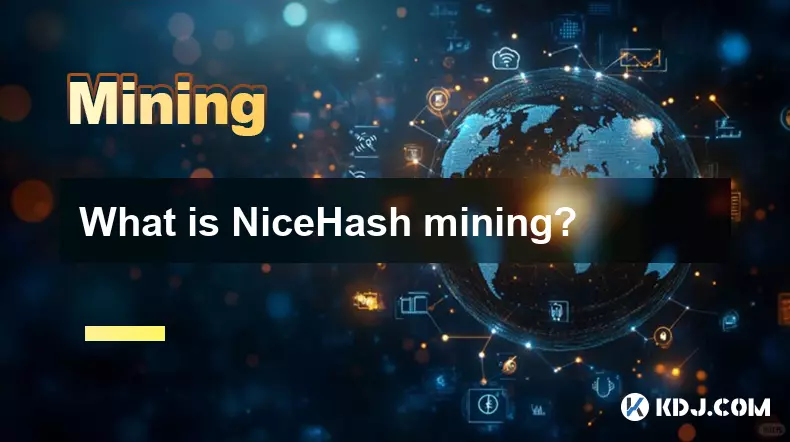-
 bitcoin
bitcoin $100977.009184 USD
-2.05% -
 ethereum
ethereum $3282.009150 USD
-3.23% -
 tether
tether $0.999813 USD
-0.02% -
 xrp
xrp $2.208254 USD
-4.89% -
 bnb
bnb $951.411089 USD
0.55% -
 solana
solana $155.761205 USD
-2.84% -
 usd-coin
usd-coin $1.000217 USD
0.02% -
 tron
tron $0.284475 USD
-1.28% -
 dogecoin
dogecoin $0.162363 USD
-1.53% -
 cardano
cardano $0.533988 USD
-0.47% -
 hyperliquid
hyperliquid $39.174339 USD
-3.22% -
 chainlink
chainlink $14.724828 USD
-1.16% -
 bitcoin-cash
bitcoin-cash $477.297986 USD
-1.28% -
 zcash
zcash $554.227426 USD
17.30% -
 ethena-usde
ethena-usde $0.998995 USD
-0.03%
The Complete Guide to Immersion Cooling: A Strategy for Large-Scale Farms.
Immersion cooling boosts crypto mining efficiency by submerging hardware in dielectric fluid, enhancing performance, reducing noise, and extending equipment life.
Nov 05, 2025 at 09:30 am

Understanding Immersion Cooling in Cryptocurrency Mining
1. Immersion cooling is a thermal management technique where mining hardware is submerged in a non-conductive liquid coolant. This method efficiently dissipates heat generated by ASICs and GPUs during continuous operation. The dielectric fluid absorbs heat directly from components, eliminating the need for traditional air-based cooling systems.
2. Unlike conventional setups that rely on fans and ventilation, immersion cooling reduces ambient temperature fluctuations within mining facilities. This stability enhances hardware longevity and consistent performance across large-scale operations.
3. The process involves sealing mining rigs in tanks filled with specialized fluids such as 3M Novec or mineral oil. These liquids transfer heat to external radiators or chillers without risking electrical damage to sensitive circuitry.
4. Energy efficiency improves significantly because immersion systems require less power to maintain optimal temperatures compared to HVAC-dependent farms. Reduced cooling overhead translates into lower operational costs over time.
5. Operators managing thousands of units benefit from compact rack designs enabled by immersion technology. Higher density deployment becomes feasible without overheating concerns, maximizing space utilization in industrial mining warehouses.
Benefits of Immersion Cooling for Large-Scale Mining Farms
1. Heat dissipation occurs at a much faster rate due to direct contact between hardware and coolant. This allows miners to sustain higher clock speeds without thermal throttling, increasing hash output per machine.
2. Noise reduction is a major advantage; immersion-cooled farms operate nearly silently since mechanical fans are no longer necessary. This makes locating facilities near urban centers more viable despite strict noise regulations.
3. Dust and moisture infiltration—common causes of hardware failure—are eliminated when equipment remains sealed in fluid baths. Maintenance intervals extend, reducing downtime and labor expenses.
4. Thermal stress on semiconductors decreases, leading to prolonged component life. For operators investing millions in mining rigs, preserving asset value through reduced wear is critical.
5. Scalability improves as modular immersion tanks can be added incrementally. Each unit operates independently, simplifying upgrades and repairs without disrupting the entire network.
Implementation Challenges and Considerations
1. Initial capital expenditure for immersion infrastructure exceeds standard air-cooling setups. Costs include custom tanks, compatible pumps, filtration systems, and dielectric fluid procurement.
2. Not all mining hardware is designed for submersion. Modifications may be required to remove fans or reposition sensors, which could void manufacturer warranties.
3. Fluid maintenance is essential to prevent degradation over time. Impurities introduced during servicing or evaporation can affect cooling performance and necessitate periodic replacement.
4. Facility design must account for weight loads, as filled tanks are substantially heavier than traditional server racks. Structural assessments are necessary before installation.
5. Training personnel to handle fluid-based systems safely ensures long-term reliability. Technicians need knowledge about handling dielectric liquids and emergency procedures for leaks.
Frequently Asked Questions
What types of dielectric fluids are commonly used in immersion cooling?Mineral oil, fluorocarbons like 3M Fluorinert, and engineered fluids such as Green Revolution Computing’s Carnot Liquid are widely adopted. Each offers different trade-offs in cost, thermal capacity, and environmental impact.
Can immersion cooling be retrofitted into existing mining farms?Yes, but it requires redesigning rack layouts and reinforcing flooring. Retrofitting often involves phasing out older air-cooled units gradually while integrating new immersion-ready infrastructure.
Does immersion cooling affect mining hardware performance negatively?No, it typically enhances performance by maintaining lower junction temperatures. Stable thermal conditions allow processors to maintain peak frequencies longer than under fluctuating air-cooled environments.
How often does the coolant need to be replaced?High-quality dielectric fluids can last several years under normal conditions. Regular monitoring for contamination and oxidation determines replacement timing, usually every 3–5 years depending on usage intensity.
Disclaimer:info@kdj.com
The information provided is not trading advice. kdj.com does not assume any responsibility for any investments made based on the information provided in this article. Cryptocurrencies are highly volatile and it is highly recommended that you invest with caution after thorough research!
If you believe that the content used on this website infringes your copyright, please contact us immediately (info@kdj.com) and we will delete it promptly.
- BlockDAG, Avalanche, Dogecoin: Crypto's Leading Trio in 2025
- 2025-11-07 22:05:01
- Layer 2 Coins: Will There Be a Potential Explosion by 2026?
- 2025-11-07 16:50:02
- Filecoin, ICP, and the AI Infrastructure Renaissance: Is History Repeating?
- 2025-11-07 16:50:02
- Bitcoin's Wild Ride: Surges, Zeros, and the Search for Stability
- 2025-11-07 17:05:01
- XRP, Bitcoin, and the Rally: What's the Deal, New York?
- 2025-11-07 17:25:01
- Filecoin, DePIN, and a Technical Breakout: What's the Buzz?
- 2025-11-07 17:05:01
Related knowledge

What is the block reward in mining?
Nov 06,2025 at 12:35am
Understanding Block Rewards in Cryptocurrency Mining1. The block reward is the incentive miners receive for successfully validating and adding a new b...

How do mining algorithms work?
Nov 06,2025 at 04:59am
Mining Algorithms and Their Role in Blockchain Networks1. Mining algorithms serve as the backbone of blockchain consensus mechanisms, ensuring that tr...

What is NiceHash mining?
Nov 06,2025 at 07:40am
NiceHash mining refers to the process of renting out computational power to individuals or organizations seeking to mine cryptocurrencies without owni...

Does an antivirus program affect mining?
Nov 05,2025 at 09:29pm
Understanding Decentralized Exchanges in the Crypto Ecosystem1. Decentralized exchanges (DEXs) operate without a central authority, allowing users to ...

What is the history of Bitcoin mining?
Nov 05,2025 at 08:15pm
Within the fast-moving world of cryptocurrency, new developments emerge daily, reshaping how investors, developers, and institutions interact with dig...

How is the energy consumption of mining justified?
Nov 05,2025 at 10:20pm
Energy Consumption in Cryptocurrency Mining1. The energy consumption associated with cryptocurrency mining has drawn significant attention from enviro...

What is the block reward in mining?
Nov 06,2025 at 12:35am
Understanding Block Rewards in Cryptocurrency Mining1. The block reward is the incentive miners receive for successfully validating and adding a new b...

How do mining algorithms work?
Nov 06,2025 at 04:59am
Mining Algorithms and Their Role in Blockchain Networks1. Mining algorithms serve as the backbone of blockchain consensus mechanisms, ensuring that tr...

What is NiceHash mining?
Nov 06,2025 at 07:40am
NiceHash mining refers to the process of renting out computational power to individuals or organizations seeking to mine cryptocurrencies without owni...

Does an antivirus program affect mining?
Nov 05,2025 at 09:29pm
Understanding Decentralized Exchanges in the Crypto Ecosystem1. Decentralized exchanges (DEXs) operate without a central authority, allowing users to ...

What is the history of Bitcoin mining?
Nov 05,2025 at 08:15pm
Within the fast-moving world of cryptocurrency, new developments emerge daily, reshaping how investors, developers, and institutions interact with dig...

How is the energy consumption of mining justified?
Nov 05,2025 at 10:20pm
Energy Consumption in Cryptocurrency Mining1. The energy consumption associated with cryptocurrency mining has drawn significant attention from enviro...
See all articles





















![The Graph Price Prediction [GRT Crypto Price News Today] The Graph Price Prediction [GRT Crypto Price News Today]](/uploads/2025/11/07/cryptocurrencies-news/videos/690d4df44fe69_image_500_375.webp)



















































